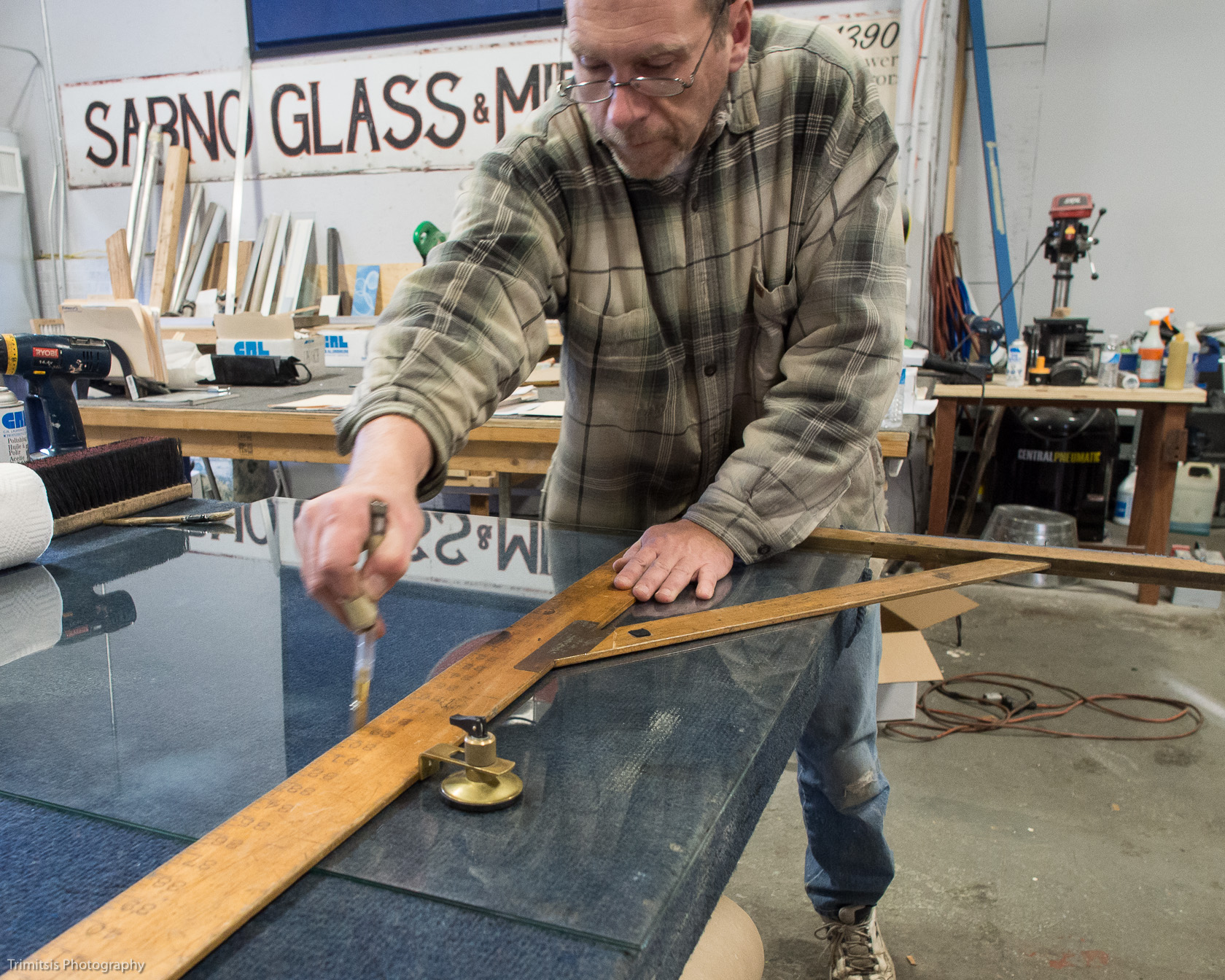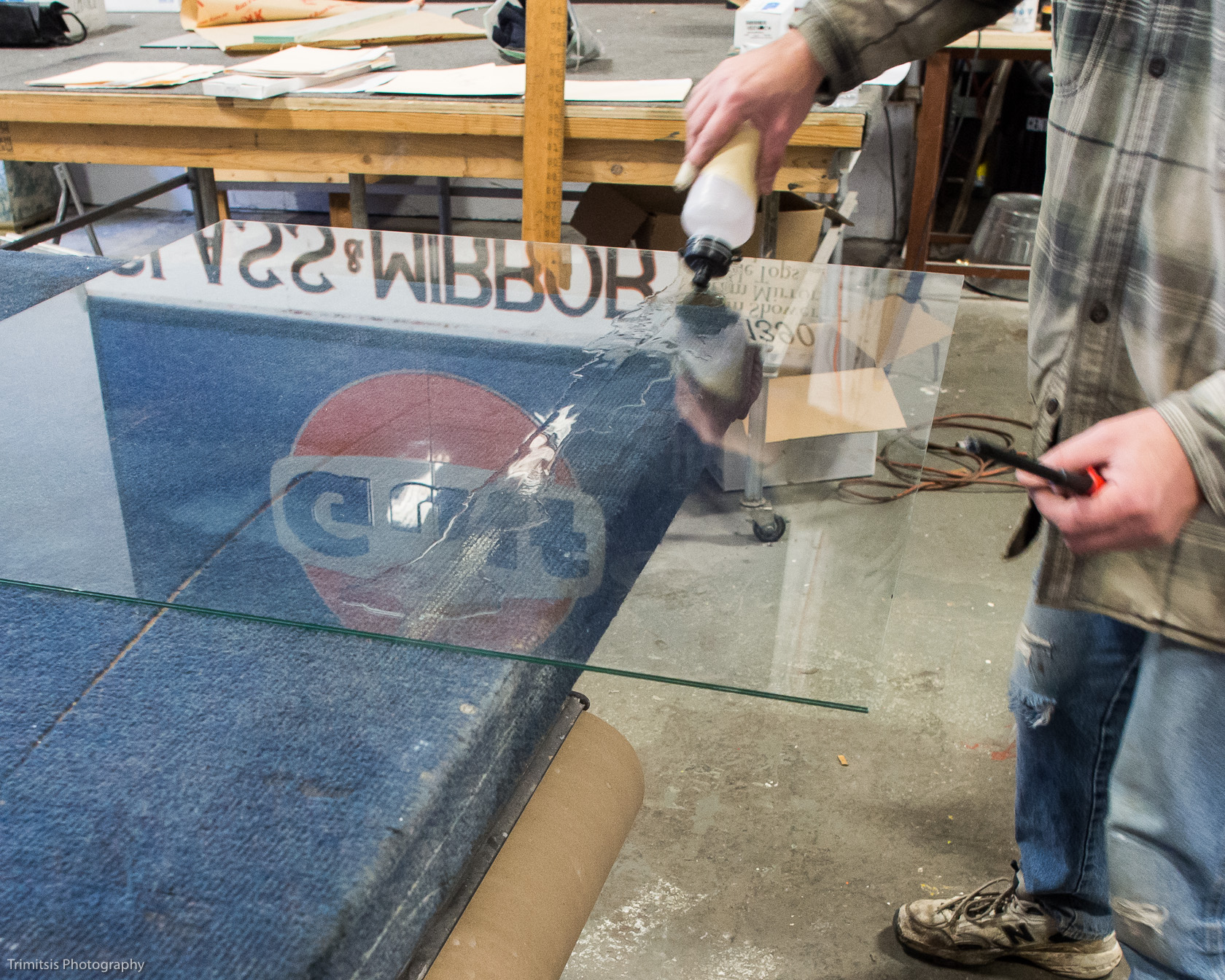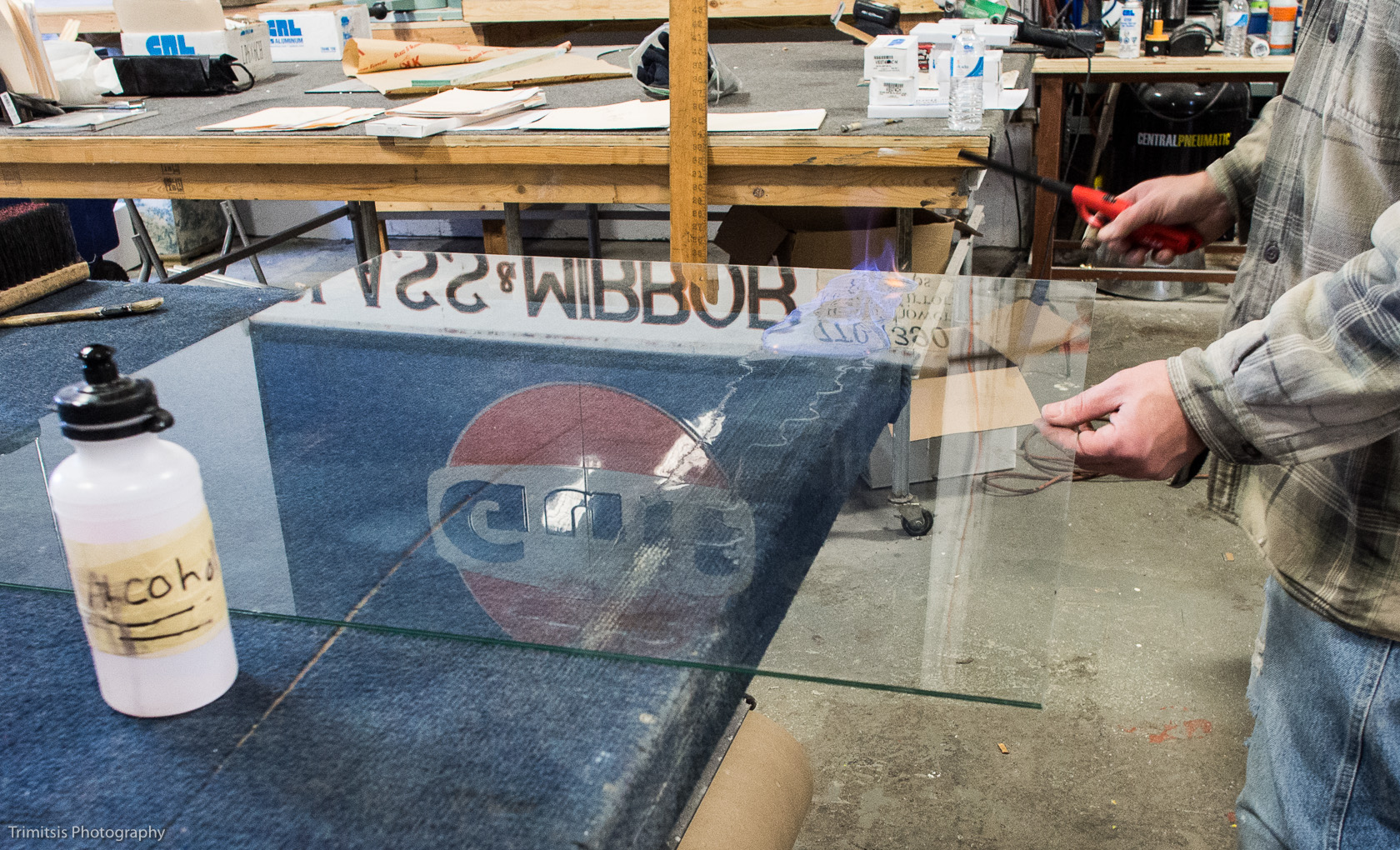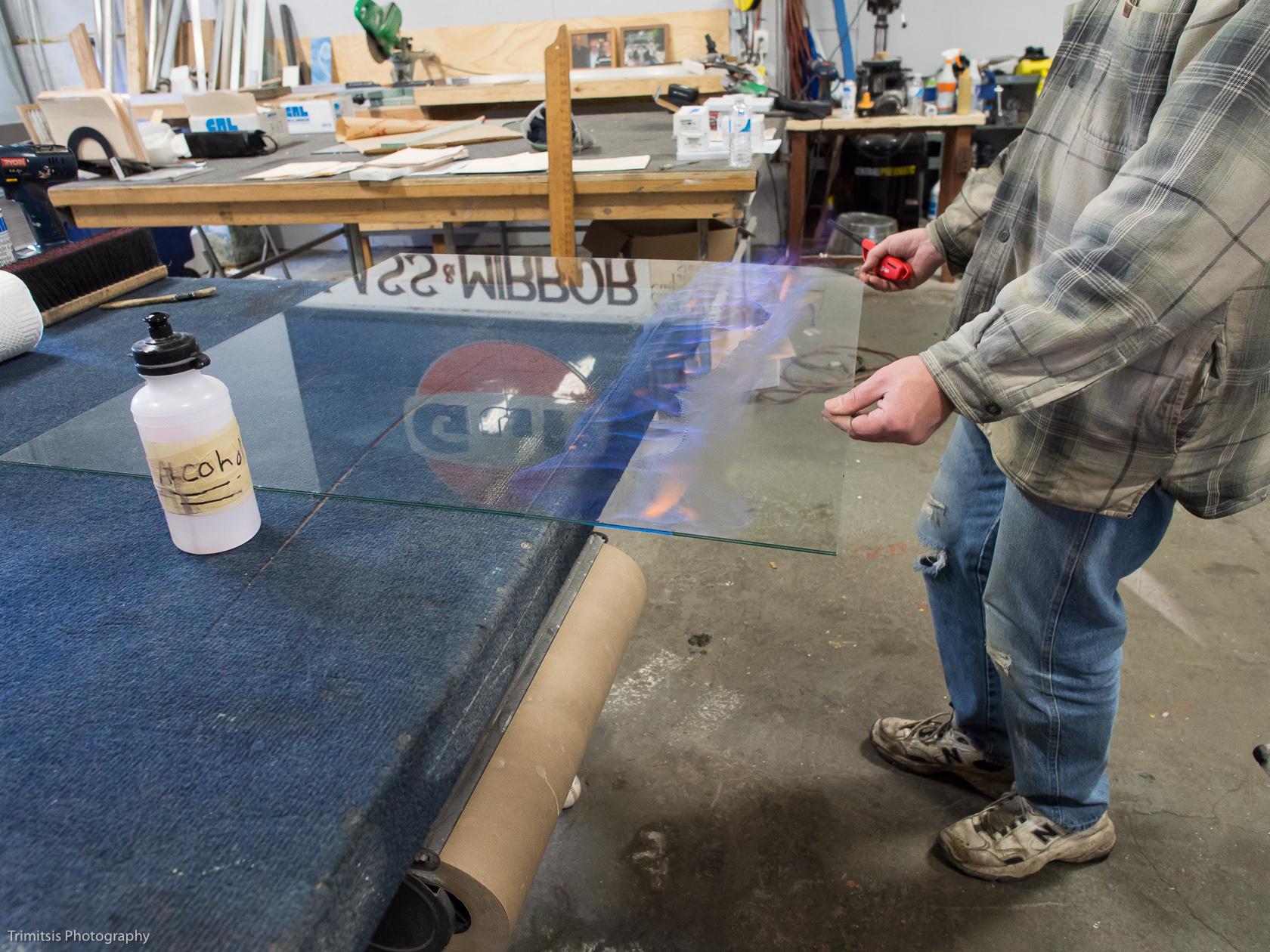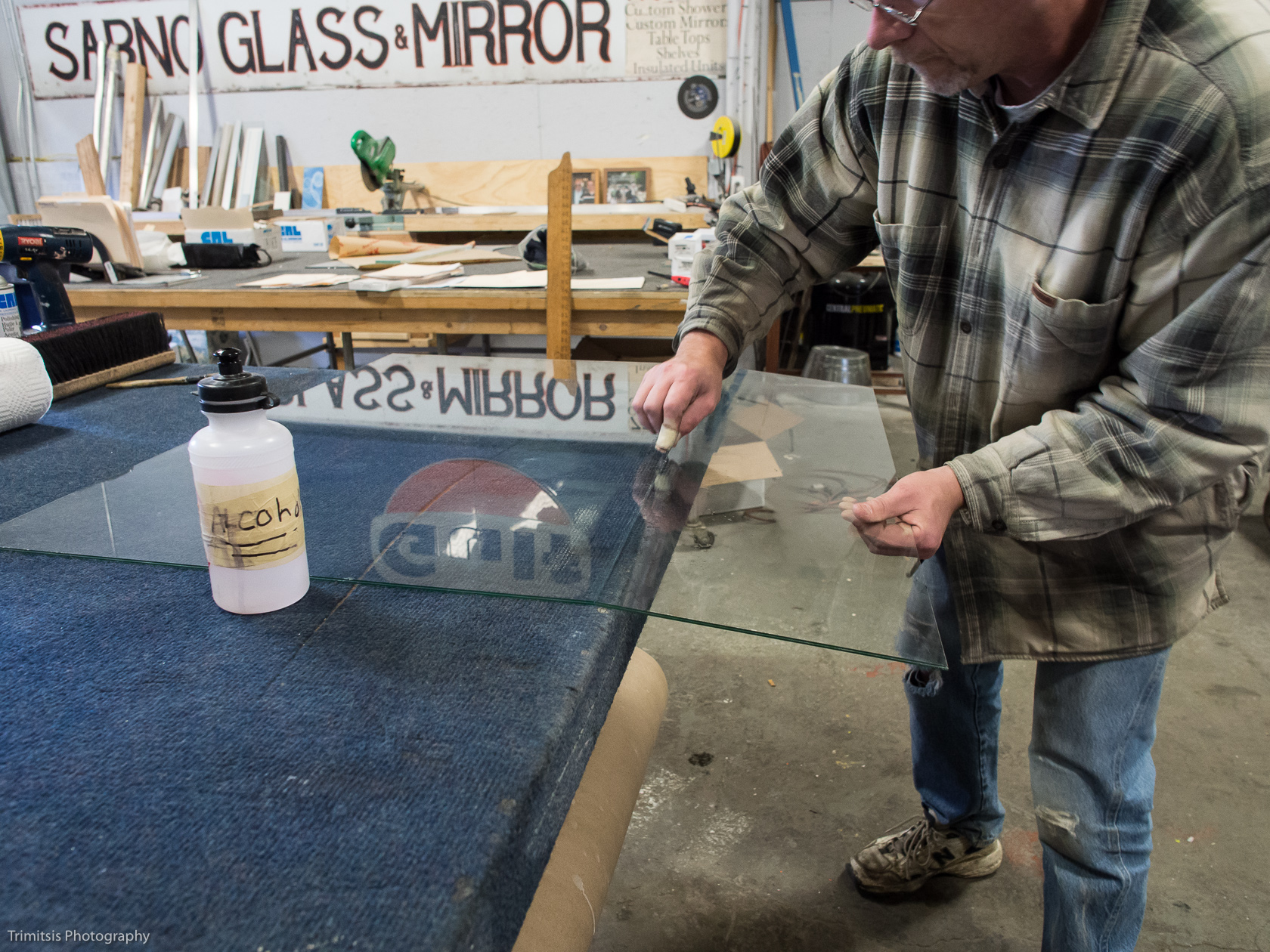Glass magic
Posted on 26 December 2012
One of the key fringe benefits of my work is getting to see other trades at work. And the very best part is seeing the brilliant, magical techniques that other tradespeople regard as completely routine.
The other day I had to pick up a piece of laminated glass from Sarno Glass and Mirror in Hyde Park, MA. We were making a door for a medicine cabinet (for the third time, but that’s another story), and we needed to use safety glass so that a slipping client wouldn’t bump into the cabinet, break the glass, and sever an artery. There are two kinds of safety glazing — laminated and tempered glass. Tempered glass is a pain, as it has to be cut first, and then tempered in an industrial oven; there is often a significant lead time. John Sarno suggested instead that we use laminated glass — two sheets of normal glass sandwiching a layer of tough plastic — since he had it in stock and could cut it to size right away.
When I arrived at the glass shop to pick up the piece, I realized that there had been some miscommunication, and the piece that was ready was thicker than I needed. This turned out to be a very fortuitous mistake, at least from my selfish standpoint, as I got to watch the new piece being cut. There are many things I take for granted, and it seems that cutting lammy is one of them. Here’s the complication that had never occurred to me: you can cut each side of the sheet normally with a glass cutter, but how do you cut the plastic in between? Here’s the deal:
Using a normal diamond-wheel glass cutter, he’s able to score one side of the laminated glass sandwich, and then with very careful downward pressure, snap that sheet without shattering the other side. Then he flips the sheet and repeats. I’ve done this sort of glass cutting myself, but the pros do it much more elegantly. Notice, for example, the brass holder that supports the L-square near the bottom of the image — it’s attached to the glass with a little suction cup! I always struggle with the straightedge slipping on me while I’m cutting; now I understand.
But now that he’s got both sheets of glass scored, things get more interesting.
With a handy squeeze bottle, he floods the surface of the glass with denatured alcohol. Then, flambé!
He lets the flame grow, and then starts gently flexing the piece of glass up and down.
As the flame warms the plastic layer between the sheets of glass, the plastic softens enough that he can stretch it a bit by flexing the whole sheet up and down. And the flame from the alcohol isn’t hot enough to cause a thermal shock that could break the glass. (The astute reader will notice both a baseball and a border collie in the photo above. To the best of my knowledge, OSHA frowns on the presence of either in a glass shop.)
Now that the plastic has been stretched, there’s just enough room to fit a single-edged razor blade into the gap to make the final cut.
Tagged: alcohol, cutting, fire, Glass, Hyde Park, laminated glass, Sarno Glass and Mirror

